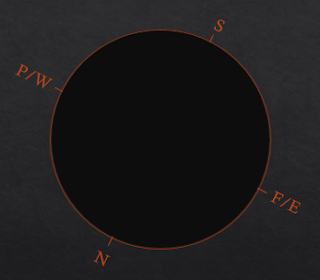Recently, I saw some planet sketches that showed F and P instead of E and W respectively. It took me days to understand what there letters meant. In the end, it was the Astronomical Sketching book that provided the answer.
P - Indicates the "preceding" side of a planet that is "rotating away into evening."
F - Conversely, for the "following" side where features "emerge from night into daytime."
This orientation matches telescope systems with an odd number of reflections, like a Schmidt-Cassegrain telescope with a star or mirror diagonal.
This raises new questions...
Does this apply to the planet being sketched or imaged or is it simply a reference from our Earthly perspective?
What about planets that spin the other way? Say, Venus?
What about planets deeply inclined, like Uranus?
§
I found an intriguing definition on Orientation at the SEDS web site.
Orientation in the sky, or celestial sphere, is determined by the rotation of Earth, defining North and South by the rotation axis, as well as East and West by the sense of rotation: Like on Earth's surface, North is the direction of the "right thumb" if the fingers of the right hand point in the direction of rotation (South opposite), East is pointed to by the rotation of earth, so that celestial object appear to move from East to West. Therefore, West is also referred to as "Preceding" and East as "Following" direction. A more [accurate] measure for the orientation of a feature in the sky is the position angle.I still can't quite wrap my head around this terminology.
I'm inclined to stick with N, E, W, S cardinal indicators...



No comments:
Post a Comment